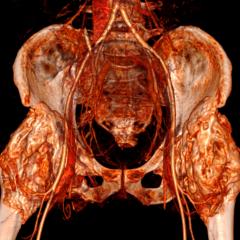A group of Brisbane researchers has launched a wide-ranging study of how skin cancers are cared for and treated in organ transplant recipients when they attend hospital.
The University of Queensland and QIMR Berghofer project is being funded by the Australian Skin and Skin Cancer Research Centre, which is being launched in Brisbane today.
The rate of skin cancers (squamous cell carcinomas, or SCCs, and basal cell carcinomas, or BCCs) in organ transplant recipients is at least 30 times higher than in the general population and transplant patients account for most deaths from these skin cancers.
Researchers have teamed up with physicians and surgeons from the Princess Alexandra Hospital to study kidney and liver transplant recipients who are referred to the hospital’s new Transplant Skin Clinic.
QIMR Berghofer’s Professor Adele Green, who is the lead researcher on the project, said the multi-disciplinary team would assess many issues faced by the transplant recipients.
These included how many skin cancers they developed each year and how serious these cancers are, the range of treatment they required and the prevention advice they were given.
“The greatly increased incidence of skin cancer in transplant recipients is caused by joint action of sun damage and the immunosuppressive drugs they take to prevent their bodies rejecting the donated organ,” Professor Green said.
“The rates of skin cancer in these patients increase the older they get and the longer they spend on immunosuppressive medication.
“We will study how skin cancer is cared for among these patients, what sort of preventive advice they are given, and whether they adopt that advice. This will help us to determine how best to reduce the skin cancer problems in these high-risk transplant patients.”
Associate Professor Kiarash Khosrotehrani from the University of Queensland Centre for Clinical Research (UQCCR) said the researchers were approaching the study from a patient’s perspective.
“We are seeing transplant patients with an average of 10 to 20 skin cancers each year, which is a terrible burden for those who have already endured considerable ill health and complex medical procedures,” he said.
“We would also like to develop a model to predict a patient’s future risk of developing skin cancer when they undergo their transplant.
“Patients are advised to protect themselves from the sun, but we need to determine what follow-up and interventions are needed to monitor and manage their skin cancers, and how we can best ensure their quality of life.”
Princess Alexandra Hospital nephrologist Associate Professor Nicole Isbel said the study would also assess whether having a designated Transplant Skin Clinic meant that patients could be assessed quickly and efficiently, reducing delays to definitive treatment and hopefully reducing long-term risk of death associated with skin cancer.
“This clinic aims to educate patients, and to detect and treat cancers that do appear as early as possible,” she said.
“Primary prevention is better for patients and more cost-effective, so we hope to find that this clinic saves money as well as lives.”
The Australian Skin and Skin Cancer Research Centre combines the expertise of both QIMR Berghofer and UQ.
The centre is one of the largest of its kind in the world and will drive globally-relevant research into skin and skin cancer.
Media: Kim Lyell, k.lyell@uq.edu.au, +61 7 33465214, 0427 530647.



